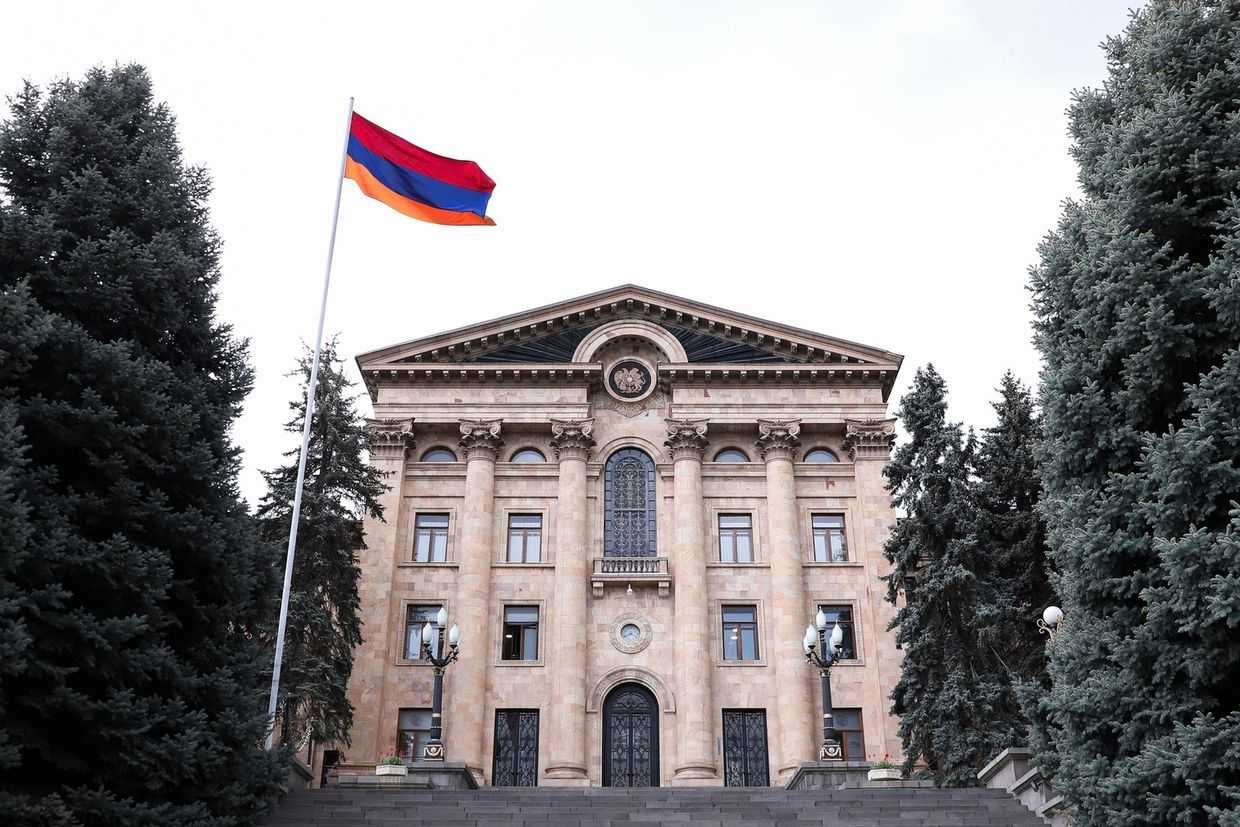
Armenia has received at least 6,650 Armenian refugees fleeing Nagorno-Karabakh as of Monday evening. The refugees have crossed into the country through the Lachin Corridor, with people reporting vast queues of thousands of cars on the road.
According to the authorities in Stepanakert, hospitals in Armenia are currently treating 23 people who were seriously injured in Azerbaijan’s assault on Nagorno-Karabakh, with more expected to be transferred later.
However, on Monday, Nagorno-Karabakh authorities stated that they were unable to facilitate the transport of those injured due to congestion on the Stepanakert–Goris highway. They added that the congestion also impeded the transfer of medical and humanitarian supplies.
Stepanakert added that despite the current traffic, any Nagorno-Karabakh Armenian who wished to move to Armenia would be able to do so, as it had agreed with Baku that ‘there are no set deadlines’ for the evacuation.
They added that they would prioritise the evacuation of those who lost their homes in the fighting.
Stepanakert also stated that the authorities in Nagorno-Karabakh would continue to carry out administrative duties until they had ‘fully ensured the evacuation of citizens who wish to travel to Armenia’.
Nagorno-Karabakh Armenians seeking evacuation to Armenia are being provided with free fuel, potentially imported through Azerbaijan. Hayk Ghazaryan, a CivilNet correspondent, reported that there were long queues at gas stations and pawn shops in Stepanakert.
‘To say that the situation in Stepanakert is sad is an understatement’, said Ghazaryan, who was also trying to secure his share of petrol to leave Nagorno-Karabakh.
On Monday evening, reports emerged of an explosion at a gas station in Stepanakert. Nagorno-Karabakh’s emergency services have confirmed that several people were killed in the explosion.
The State Oil Company of Azerbaijan (SOCAR) on Sunday delivered 24 tonnes of petrol to Stepanakert, reportedly for use in agriculture and emergencies.
‘A policy of ethnic cleansing’
The authorities in Stepanakert have been carrying out searches for dead and missing persons since Thursday, a day after they announced their surrender.
They have also been facilitating the transfer of injured and ill people to hospitals in Armenia, managing the arrival of humanitarian and medical aid, as well as of goods and fuel transported by the Red Cross and Russian peacekeepers through the Lachin Corridor.
The Russian peacekeepers stationed in Nagorno-Karabakh have imported 150 tonnes of humanitarian aid since the region’s surrender, while the ICRC moved 65 tonnes of flour into the region through the Lachin corridor on Sunday.
While death tolls have yet to be tallied, Stepanakert has reported that they have found 105 dead people across the different regions of Nagorno-Karabakh.
At least 200 people were killed and over 400 wounded. Of those killed, at least 10 were reportedly civilians, including five children.
Azerbaijan has yet to publish any death tolls, however, Habib Muntazir, an independent Azerbaijani journalist has cited sources as saying that at least 200 Azerbaijanis were killed in the fighting.
Bellingcat, a platform which conducts open source investigations, reported that Azerbaijan had targeted residential areas in Nagorno-Karabakh, despite Azerbaijani claims to the contrary.
Nagorno-Karabakh’s Human Rights Defender’s Office also issued a statement about posts on Azerbaijani Telegram channels encouraging Azerbaijani soldiers to find, kill, torture, and rape Nagorno-Karabakh Armenians who were declared missing.
‘Many relatives of the missing people, who are already in a vulnerable psychological state, complain about Azerbaijan terrorising and threatening them by calls and text messages’, read their statement.
The ombudsman also reported that several Nagorno-Karabakh Armenians had been captured by Azerbaijani forces.
Sarnaghbyur community of Askeran region had 76 residents before the attack of Azerbaijan on September 19. 5 were killed, 15 were wounded, 4 were captured by Azerbaijan.
The names of the civilian victims from Sarnaghbyur:
Alexander Alexanyan
Gohar Grigoryan
Nver Ghazaryan…— Artsakh / Nagorno-Karabakh Human Rights Ombudsman (@ArtsakhOmbuds) September 24, 2023
In a Sunday address, Armenia’s Prime Minister Nikol Pashinyan stated that Nagorno-Karabakh’s Armenian population faced the risk of ethnic cleansing.
‘The responsibility for such a development of events will fall entirely on Azerbaijan, which has adopted the policy of ethnic cleansing, and on the peacekeeping troops of the Russian Federation in Nagorno-Karabakh’, stated Pashinyan.
Pashinyan has previously criticised the Russian peacekeeping contingent for failing to prevent the Azerbaijani attack.
‘If the peacekeepers could agree on a ceasefire, why couldn’t they agree before the attack that the attack would not take place on Nagorno-Karabakh, after all’, said Pashinyan on Thursday.
The Kremlin’s Spokesperson, Dmitry Peskov, criticised Pashinyan for blaming the Russian peacekeeping mission.
‘We understand the emotional intensity of this moment, but we categorically disagree with the attempt to place responsibility on the Russian side, or even more so on the Russian peacekeepers, who are showing real heroism in performing their functions in accordance with the mandate that they have’.
‘Azerbaijani light now shines in Khankendi’
A second round of talks between representatives of Baku and Stepanakert was held on Monday in Khojaly (Khojalu).
Azerbaijan’s Presidential Administration stated that the representatives discussed the status of elderly Armenians residing in the town. Azerbaijan has reportedly provided them with medical treatment, and is attempting to facilitate their transfer to their families or to hospitals for additional care, through the Red Cross.
Additionally, the administration said that the representatives discussed the establishment of a field hospital staffed by Azerbaijani and Armenian medical professionals near Stepanakert or Khojaly.
The Presidential Administration additionally stated that it had proposed the organisation of visits by Nagorno-Karabakh’s Armenian civil society representatives and social activists to Baku and other Azerbaijani cities to create a ‘civil society dialogue platform, as well as implementing confidence-building measures’.
The administration also announced that it had restored electric lines to Nagorno-Karabakh, which have been disconnected since 19 September.
It explained that Azerbaijan had disconnected Nagorno-Karabakh from Armenian lines and connected them to Azerbaijan’s power grid.
‘Azerbaijani light now shines in Khankendi [Stepanakert]’, the Presidential Administration said in a statement.
The restoration of power to the region was among the issues discussed in last week’s Yevlakh meeting, which saw representatives from Stepanakert and Baku convening a day after Nagorno-Karabakh’s surrender.
For ease of reading, we choose not to use qualifiers such as ‘de facto’, ‘unrecognised’, or ‘partially recognised’ when discussing institutions or political positions within Abkhazia, Nagorno-Karabakh, and South Ossetia. This does not imply a position on their status.









